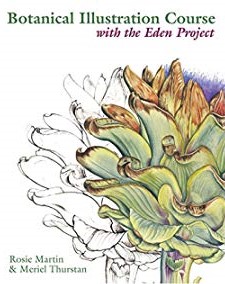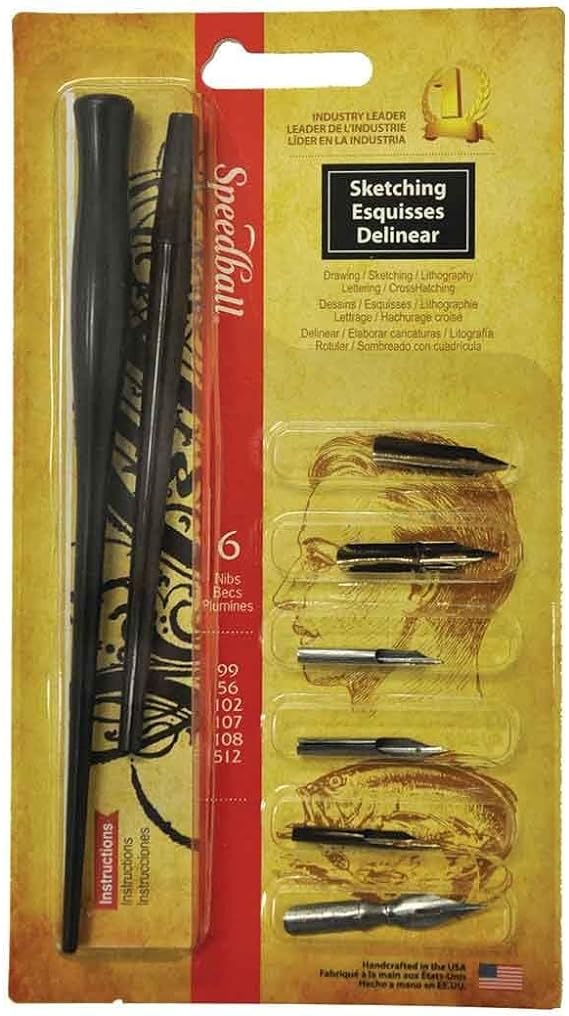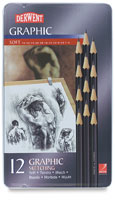Course Materials
Required Reading
One of our favorite books: Botanical Illustration Course with the Eden Project by Rosie Martin and Meriel Thurstan
We will assign readings from this book, so it is required that you purchase it. The book can be found online or at a library. It is also available through many used bookstores.

Optional Reading
A list of optional books to be used with this course can be found in the 'Additional Resources' topic at the end of the course. To access the list, simply click the 'Materials for Further Exploration' resource.
These books can be found in your local bookstore or library. If you have trouble finding them, try online book vendors.
Supplies
Graphite pencils. These drawing pencils can be purchased at any craft store or local art supplier. I suggest purchasing wood-encased graphite pencils that require sharpening, rather than buying mechanical pencils that can carry leads of different hardness for reasons that will be clarified when we learn line and shading techniques.
- Hardness. Drawing pencils come in several degrees of hardness which will produce lines of varying darkness. The softest pencil is the 6B, which will produce the darkest line. the hardest is 6H, providing a finer, sharper line. Between these is a continuum of hardness:
6H 5H 4H 3H 2H HB 2B 3B 4B 5B 6B
hardest mid-range softest
- You can buy a set of pencils which will contain all or a selection of these, or you can purchase them individually. If purchasing individually, make sure to span the range with your selections. Another excellent drawing pencil is the Sanford Ebony Jet Black pencil #14420.
Erasers. You will need two of these. A Kneaded eraser is made of pliable gum rubber; when kneaded, it will resemble a large, chewed piece of gum. This can be pulled to a point to reach inside small spaces for erasure. A Plastic eraser or White Vinyl eraser is somewhat flexible and excellent for cleanly erasing larger parts of a drawing.
Sharpener. A good sharpener produces a long, sharp tip. You may consider sharpening your pencils with a craft knife since it will allow the pencil to last longer.

Drawing Paper. Drawing paper is available in different weights and sizes. For the different range of mediums: pencil, ink, pastels, and charcoal you should purchase the appropriate paper for the type of art medium. You will want to try different papers to experiment to find out which you prefer, and should start out with inexpensive papers. The paper is available in sheet form, or in blocks.
Set of Black Pens.Purchasing a good set of black pens with a wide range of sizes is important for this course. 'Micron' or 'Prismacolor' pens are great for illustrating because of the lasting quality of Pigma ink. These pens are acid-free and archival. Unlike dye-based ink found in most pens and markers, Pigma ink will not feather or bleed, even through the thinnest paper. Pigma ink is derived from a single pigment to ensure color consistency, and is fadeproof against sunlight or UV light. Pigma inks will not clog or dry out like most mechanical pens.
 Speedball Crow Quill Dip Pen with Nibs and Ink. This is the more traditional option for ink (instead of pen). I will leave it up to you as to whether you prefer to use this medium; though some assignments may reference it, you may prefer microns.
Speedball Crow Quill Dip Pen with Nibs and Ink. This is the more traditional option for ink (instead of pen). I will leave it up to you as to whether you prefer to use this medium; though some assignments may reference it, you may prefer microns.

Colored Marker Set. Designed for detailed work, Prismacolor Premier Double-Ended Art Markers, or a similar high-quality brand (Copic, Winsor and Newton, or Faber-Castell are some examples), feature an advanced dye-based alcohol ink formulation that ensures rich color saturation and coverage, and smooth, silky ink flow. These markers can be purchased as individual markers, or in sets. A blender will be important to have. [Note: if you are working with a budget constraint and materials are a concern, I am glad to talk with you about substituting additional watercolors for your colored marker assignments! I know that materials can quickly add up.]
Charcoal, chalk, tortillons, and fixative. Charcoal is available in natural sticks of willow and vine charcoal, and compressed charcoal in various grades in stick or pencil form. Carbon pencils are a blend of charcoal and graphite with an oilier binder which gives a soft feel. Compressed charcoal and pencils vary in texture according to the blend of charcoal, clay and fillers used in their manufacture. Ideally, purchase a small selection to try, as preference is a matter of personal taste. You should also purchase a small set of tortillons (used for blending), and white chalk.
A fixative spray will keep your pastel, charcoal, and colored pencil work from smearing or degrading.
Watercolor. Most of you will have taken the course Working with Watercolor. You will need tubes of watercolor paint (not opaque, and not acrylic or oil) along with a palette, brushes, paper. Please contact me if you need suggestions.
Colored Pencil Sets. For creating successful botanical illustrations with colored pencil, not any type of colored pencil can be used. Prismacolor colored pencils are great for blending color and creating a smooth surface. There are other brands that are also great: Faber-Castell, Caran D'Ache, Winsor and Newton, Holbein, and Bruynzeel. These pencils can get expensive, so start out with a small set. Sometimes online art stores have great sales on this item. Many brands sell individual pencils, too.

